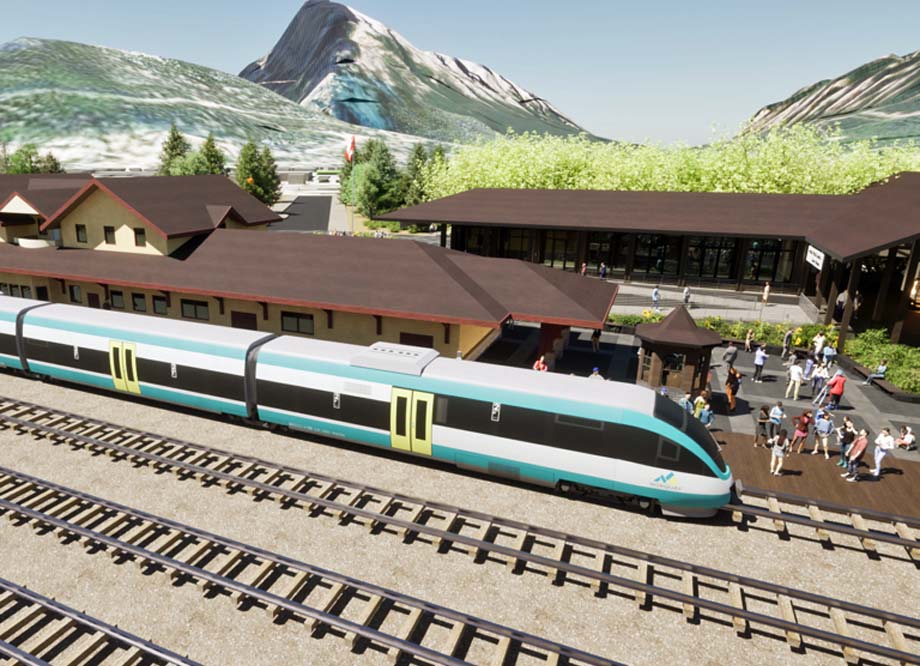

Banff Alberta - Banff National Park is no stranger to change, both radical and
incremental.
The 1911 decision to allow cars into the park changed who visited it and how.
Skiing in the 1960s transformed it into a year-round community and a town was born.
The 1988 adoption of ecological integrity slowed development while Canmore ballooned.
The 1996 Banff Bow Valley Study called for change, but little has been done.
Visitation continues to grow as do arguments about what should be done to fix this once and for all.
Post-pandemic predictions of a slow visitor return have been met with record-breaking numbers.
About 90 percent of that is by personal vehicle and regularly exceeds the town's threshold in peak
periods.
Education-based mitigation strategies have had little effect.
Research suggests that many people don't mind crowds and may even prefer it.
What to do?
Banff is a national treasure that inspires all types of visitation.
It can be easy to label much of it as over-tourism (a useless term) but we also know that lives are transformed by
these visits.
Many residents came for a visit and stayed.
Regardless, limiting visitation is negated by the highway and limited controls over access.
The addition of bus shuttles to and around the park are positive but they have limited capacity.
A 2019 study reported that residents and visitors want bold, long-term, solutions.
Those solutions begin with a multimodal transportation system that includes passenger rail and regional shuttles to
iconic sites.
This will restore structural control of the front country, and specifically, day visitation back to Parks Canada and
the town.
Education and policy efforts have not been effective for Banff, nor have they worked for Barcelona, Venice,
Yellowstone, and others.
Long-term change requires a structural backbone.
The net-zero hydrogen-powered train will accommodate 11 million riders annually, mostly labour mobility and
commuting.
About 20 percent will make their way to Banff and remove 4.5 million Bow Valley-directed car trips and reduce Banff's
outsized GHG emissions.
The bulk of ridership will be between YYC and downtown Calgary.
Animal mortality is always a concern, but it's understood within environmental circles that most of it is due to grain
cars, not passenger rail.
The Banff Railways Lands development will act as the transportation hub and support visitor dispersal by decreasing
Bow River bridge traffic and drawing visitors to the outskirts of town.
Parks Canada's management plan (2022) made encouraging green mass transit and discouraging fossil-fuel personal
vehicles official policy.
Its Expert Panel on Moving People Sustainably in the Bow Valley identified a mass transit train between Calgary and
Banff as a transformative solution to reducing the environmental impact of personal vehicles on the park.
What does this mean?
Residents and longtime visitors will experience Banff a little differently.
Some visitors may not return if unimpeded personal vehicle use is curtailed.
Over time, those amenable to mass transit will go to Banff and others will go elsewhere.
All the while, Travel Alberta is intent on growing tourism in the rest of the province.
There has never been a better time to embark on bold measures to provide Banff with a sustainable future.
A resident-first approach to sustainable tourism means infrastructure should support visitors and residents, a train
does that, while the recently proposed underground visitor parking does not.
It does nothing to support the environment, nor is it a long-term solution.
Managing the park is a huge challenge but it's time to consider bold measures that respect its mandate while
positioning it for the future.
Banff is no stranger to change, both radical and incremental.
The irony is that multimodal transport to enhance long-term sustainability is not even that radical.
Joe Pavelka.
 You want a radical, long-term, solution? Ban all visiting
vehicles. Like the Swiss example at Wengen, have only rail access from Calgary, Canmore, etc. into Banff with
electric vehicles only permitted within the townsite. If you drive the Trans-Canada, sorry, there's no
stopping in Banff permitted, keep on truck'n.
You want a radical, long-term, solution? Ban all visiting
vehicles. Like the Swiss example at Wengen, have only rail access from Calgary, Canmore, etc. into Banff with
electric vehicles only permitted within the townsite. If you drive the Trans-Canada, sorry, there's no
stopping in Banff permitted, keep on truck'n.
(likely no image with original article)
(usually because it's been seen before)
provisions in Section 29 of the
Canadian Copyright Modernization Act.
